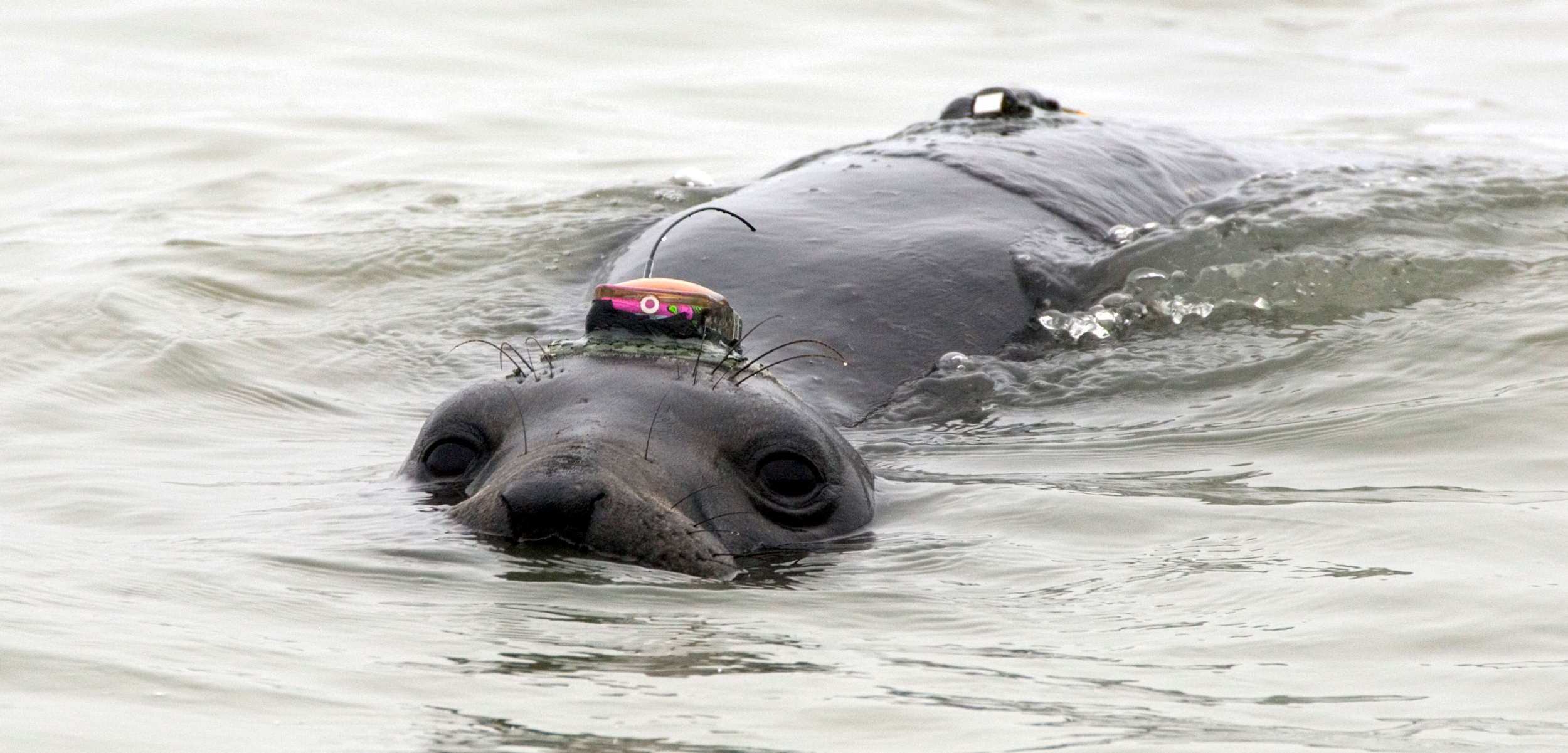For Elephant Seals, the Day Is Light and Full of Terrors
In the ocean, visibility drops dramatically with depth—a fact elephant seals take advantage of to migrate more safely.
Article body copy
In one of the longest migrations of any animal, northern elephant seals spend seven months of the year swimming back and forth from Mexico and Southern California to Alaska and the North Pacific. Along the way, they must eat, sleep, and survive a gauntlet of predatory great white sharks and killer whales. While decades of research have answered most questions about the seals’ habits, such as where they feed and how they raise their pups, there is one big question about the blubbery giants that has eluded observation.
“We know most elephant seals die at sea,” says marine biologist Roxanne Beltran, who has been studying seals for almost a decade. “But we don’t know a lot about how they die.”
From 2004 to 2012, Beltran and her colleagues at the University of California, Santa Cruz, attached a suite of high-tech trackers to 71 migrating northern elephant seals that monitored their activity over 240 days. Satellite tags glued to the seals’ heads transmitted their locations in real time, and time-depth recorders glued to their backs recorded depth, water temperature, and light levels. Since seals float passively while resting at depth, researchers were able to calculate buoyancy to determine body fat. A dozen seals also had accelerometers glued to their jaws to measure how often they caught prey.
With her team, Beltran scrutinized the mountain of data, revealing that elephant seals don’t starve to death while on their migration; they get eaten. But the sensors showed something else: they are more likely to be eaten when they swim toward the surface—toward the light—to feed.
More than that, Beltran and her colleagues learned that northern elephant seals seem to be afraid of the light, and manipulate their exposure to it—balancing their own hunger against the threat of them satiating a shark’s. When they can afford to choose, northern elephant seals hide from predators rather than fill their bellies.
“The way these seals use light depends very strongly on how fat they are,” Beltran says. Fatter seals avoid risk by shrouding themselves in darkness, spending more time resting at depths of up to 400 meters—a dark recess of the ocean known as the twilight zone for how little light penetrates it. “They basically swim down to a few hundred meters and then they just roll onto their backs and float through the water column, or sink through the water column, depending on whether they’re fat or skinny,” Beltran says. Thinner seals that have to eat spend more time near the surface where their prey, such as squid, tend to gather.
Over the past few decades, ecologists have developed a concept known as the ecology of fear to explain why animals learn to avoid specific places out of fear of predators. For elephant seals, the landscape that they fear isn’t so much a specific place as it is a certain level of light. Beltran and her colleagues call it a “lightscape of fear.”
The case study of elk avoiding wolf territory in Yellowstone National Park during certain hours is a classic example of how animals balance food and safety. “But those dynamics don’t have the same cool added element that this one does—of having the lightscape vary across the water column,” says Justine Smith, a wildlife biologist at the University of California, Davis, who specializes in predator-prey interactions and was not involved with the study.
The scientists also found that northern elephant seals vary their sleep patterns wildly to stay safe on their long migrations.
Though other animals adjust their use of territory to times when it’s less risky, northern elephant seals do this to the extreme. Light conditions in the ocean can change dramatically day by day as the seals swim through changing seasons, latitudes, and longitudes. Some other migratory animals, like birds, dolphins and whales, can sleep one hemisphere of their brain at a time while staying alert for predators with the other, literally sleeping with one eye open. Northern elephant seals, however, have not evolved that ability. When the seals are not migrating, they sleep in haulouts on land, taking a series of long naps throughout the day. But when they are migrating, elephant seals shift when they sleep to accommodate anywhere from eight to 21 hours of daylight, sleeping when their predators are least active and rising from the depths when they are more likely to be scarce.
“This very advanced technology allows us to get an unprecedented look at the lives of these animals out in the open ocean,” says Kaitlyn Gaynor, an ecologist at the University of California, Santa Barbara, who was not involved in the research.
“The best strategy for one individual might be a poor strategy for another individual because they have different needs in a given moment,” Gaynor says, “and that concept really can apply to any animal trying to make a living.”

